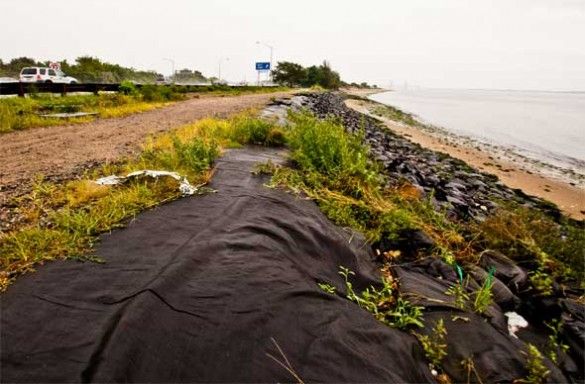Army Corps Of Engineers Set To Work On Plumb Beach

Having completed the first phase of their restoration of Plumb Beach, the Army Corps of Engineers has put out a request for proposals regarding the second phase of their operation, according to a press release.
The first phase of the Engineers project involved the dumping of 127,000 cubic yards of sand to rehabilitate the eroded coastline. For the second phase, the Corps are now planning to construct two terminal groins and one offshore breakwater. They also plan to plant 1.2 acres of beach grass.
UPDATE (1:36 p.m.): Looks like our report was a little late. Army Corps of Engineers announced this afternoon that the contract has been awarded. Here’s a portion of their press release:
NEW YORK – The U.S. Army Corps of Engineers, New York District has awarded a $2 million contract to Village Dock, Inc., of Port Jefferson, N.Y., to complete the second and final phase of construction at the coastal storm risk reduction project at Plumb Beach in Brooklyn along the Belt Parkway.
Phase I was completed in late 2012 and involved placing approximately 127,000 cubic yards of sand in the severely eroded Plumb Beach area along the Belt Parkway, a busy highway and a critical piece of the city’s infrastructure. The sand was placed just prior to Hurricane Sandy’s arrival and helped prevent serious damage to the Belt Parkway. Phase I also involved the installation of a temporary geotube groin structure to help mitigate the loss of Phase I sand while the Corps awaited the ability to award Phase II.
Phase II involves the construction of two permanent stone groins at each end of the beach to help mitigate erosion in the long run. It also involves the construction of a permanent stone breakwater in the water off of the severely eroded area essentially parallel to the beach to mitigate future sand loss. Phase II also involves planting vegetation in sand dunes to help strengthen them as well as the installation of sand fencing to trap sand blowing landward.
While Phase I provides immediate coastal storm risk reduction benefits to both the Belt Parkway and the frequently used bike path along it, Phase II is designed to keep the coastal storm risk reduction benefits in place longer by managing the movement of sand and greatly reducing the need for future renourishments at the project site.
The Phase I contract went for $3.5 million, so the total between the two contracts is $5.5 million – $1 million shy of the Army Corps of Engineers’ estimated price tag of $6.5 million.
